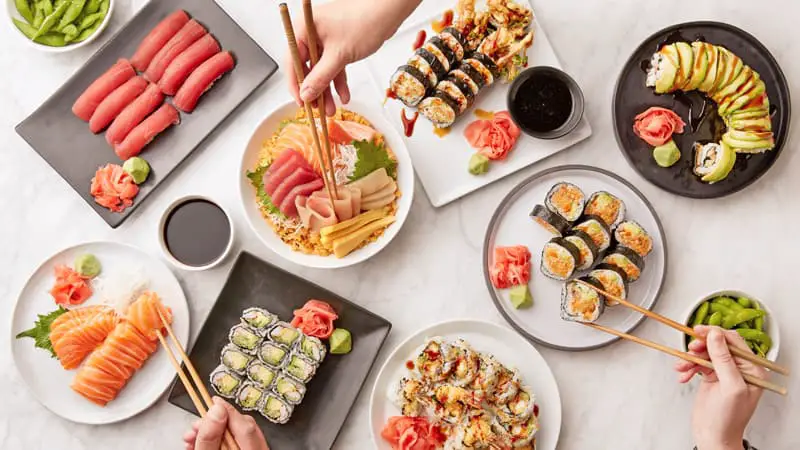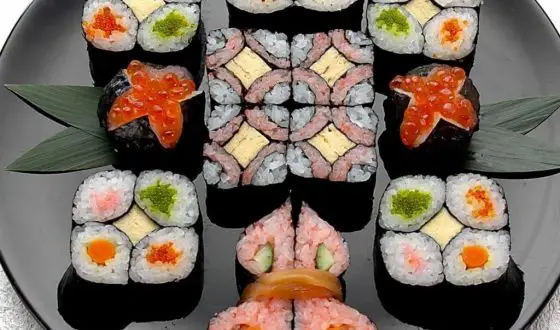How To Order Sushi Like A Native?
When mentioning Japanese cuisine, everybody will immediately call “sushi”. This is a traditional dish and also a typical cultural feature of the Land of The Rising Sun. Moreover, sushi has also crossed the Japanese border to become a popular name in many countries. However, when tourists visit Japan, they often face struggles. Ordering sushi for the first time seems more difficult than it is. Many people aren’t familiar with Japanese customs and are afraid of making a mistake. Therefore, before visiting restaurants, let’s learn tips on how to order sushi provided by Question Japan to make the ordering process easier.
How To Order Sushi: Tips To Become A Sushi Expert
What is sushi?
Sushi is very common with foreign visitors, but not many of them know exactly what it is? Simply speaking, sushi is the type of food that consists of fish, vegetables, seasoned rice, mixed with both traditional and nontraditional ingredients.
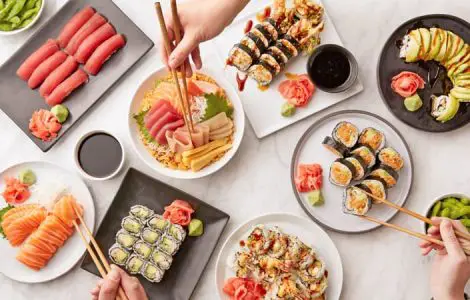
The sushi we know today is a far cry from where it began
The sushi we know today is a far cry from where it began. The original sushi was once a staple dish around various regions of Asia and was salted fish preserved in fermented rice. In fact, the word “sushi” roughly means “sour” as a nod to its fermented origins. This style of sushi was common in Japan until the end of the Edo period, when it evolved into Edomae sushi, a style of sushi closer to what we eat today. Developed by Hanaya Yohei, this sushi was larger, used fresh fish, was prepared quickly and meant to be eaten with the hands.
Sushi types and rolls
There are lots of sushi types and rolls. However, we will show you some of the most common types and rolls in the video below:
SEE MORE:
How to order sushi
Method 1: Speaking with the sushi chef
Sit at the sushi bar when you want to order sushi
Most of sushi restaurants in Japan are not very spacious; some of them have only one bar and few tables. Sushi chefs work behind the bar, so, when you’re sitting there, you can talk to them and watch them work. By this way, you can see the preparation process and how fresh the ingredients are. This can set your mind at rest and enhance your appetizer. What’s more, sitting at the bar is the fastest way to get fresh sushi. If sushi is put on the plate for too long, the quality will be decreased.

http://www.accorhotels.com/6469
However, this way is only suitable for small groups of visitors. If you come with a large group, tables or dining room are better choices.
Take a look at the menu to decide what you want.
This is the “okonomi” style. The menus often get pictures of sushi types and rolls printed on it. Some restaurants even print the ingredients of each type on the menu, so it is easier for the sushi ordering process. You can choose the ingredients that you like, and rule out the ones that you hate or are allergic to.

Okonomi!
Don’t be afraid to ask questions
Even the chef didn’t know anything about sushi when they started working in the industry, so don’t feel embarrassed if you don’t have a profound understanding of the difference among sushi types. Thus, if you need clarification, just ask the chef; they are far more willing to answer you. However, keep your questions reasonable. The chef probably has a lot of work to do, so don’t ask them to explain the whole menu.

Don’t be afraid to ask questions when ordering sushi
Choose set meals to be safe
If you want to be safe, just tell “Okamari!” to the chef. Go for this option if you prefer set meals that have a fixed price. This is usually cheaper than ordering individual dishes. Not only can you get to enjoy a variety of sushi, but also eating at a cheaper cost.
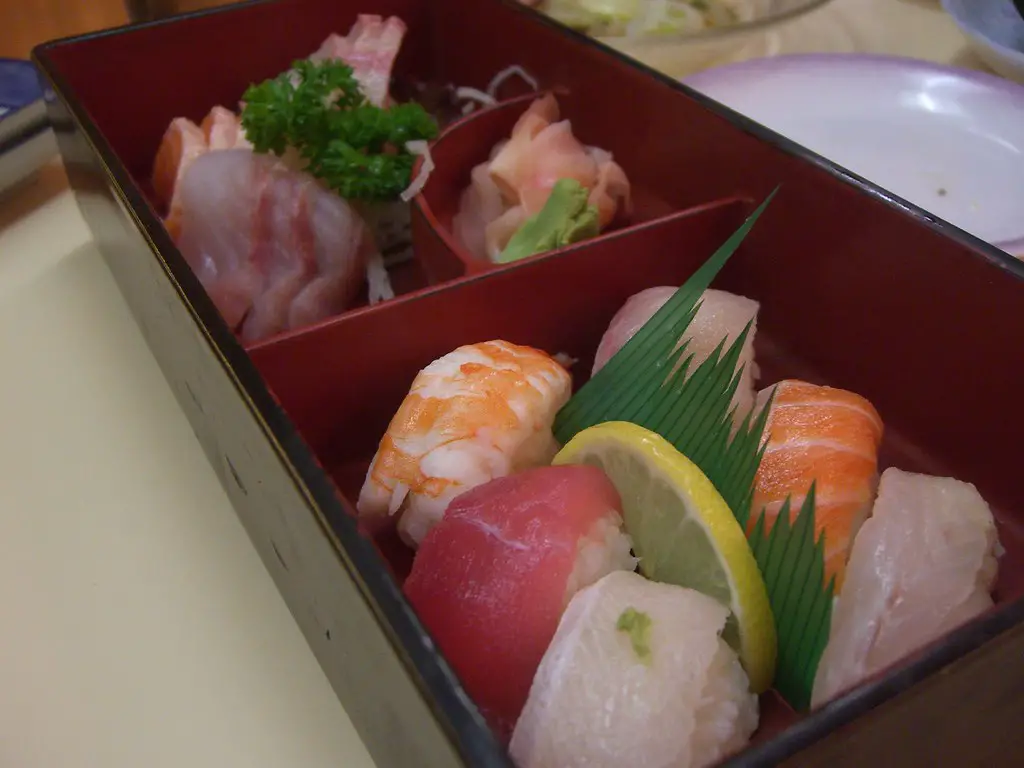
Okamari!
Leave it up to the chef
If you are still wavering on what to order, just tell “Okamase!” Omakase means “I trust in you.” When you order omakase-style, you are asking the chef to invent a menu for you. The chef selects several types of sushi, serving them one at a time. You can trust him, as he will know what would be the freshest and tastiest choice for the day.
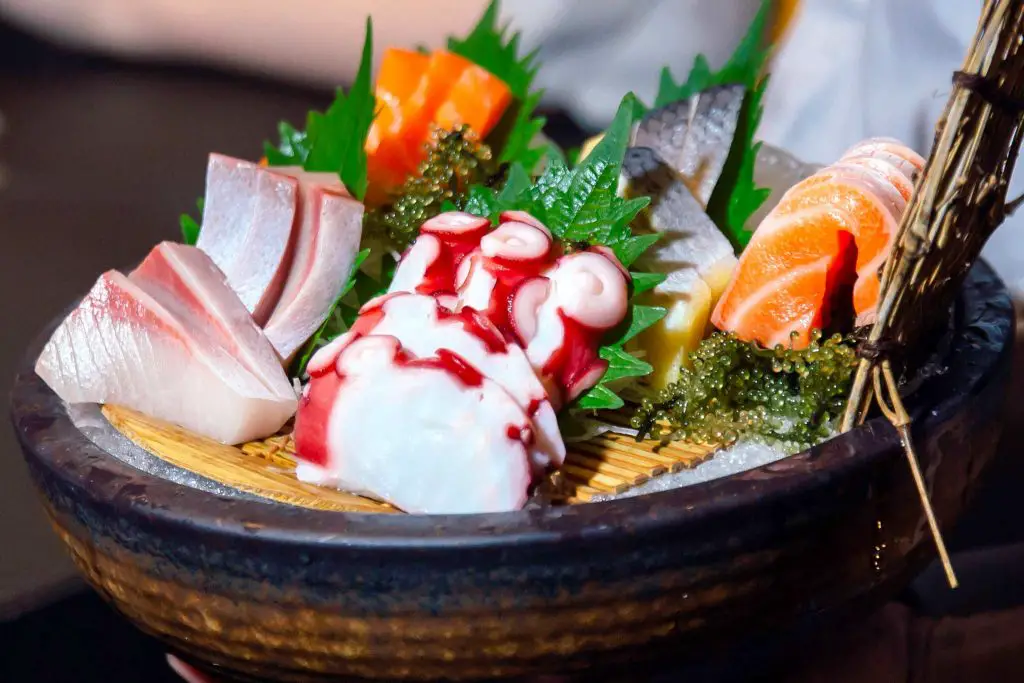
Okamase!
Be aware of your bill
In case you need recommendations from the chef, tell him how much you can afford. Chefs tend to recommend the most tastiest and the specialties, but those types of sushi are a little bit expensive. Hence, if you don’t tell him in advance, he will assume that price is not an issue. Discuss your ideal price range when you sit down at the bar. It will help the chef come up with an affordable menu for you to enjoy.
Method 2: Understanding the nature of sushi
Don’t order everything at once
As mentioned earlier, the quality of sushi will be decreased over time, so don’t order a large plate at once. Place your orders one at a time, waiting until you finish the first batch of sushi before ordering more. Ordering limited quantities will also give you a chance to sample the sushi, and enjoy it at the freshest.

Don’t order everything at once!
Eat lighter sushi before ordering heavier foods
If you’re looking for a general order to follow when getting sushi, stick with the lightest, thinnest rolls first. Big, heavy rolls often obscure the taste of lighter fare. Another way of looking at it is that lean fish come before fatty ones.
In order to understand the nature of each type of sushi, let’s read the table below:
| Type of Sushi | Description | Notes |
| Nigiri | A topping, usually fish, served on top of sushi rice | Not all nigiri is raw, though this dish is best for people who want to appreciate the flavor of the fish, shellfish, or other toppings |
| Sashimi | Fish or shellfish served alone (no rice) | This is best for people who really love to taste the fish or shellfish since it comes with nothing else |
| Maki | Rice and filling wrapped in seaweed | This is what most people think of when they think of sushi rolls |
| Uramaki | Similar to the above, but rice is on the outside and seaweed wraps around the filling | These rolls often have lots of toppings and sauces — they may either be cooked or raw |
| Temaki | Sushi that has been hand-rolled into a cone shape | The cones are not as easy to share as the rolls (though very delicious!) |
SEE MORE:
- Must-Try Japanese Alcohol – A Comprehensive Guide
- Soju vs Sake: A Comprehensible Guide To 2 “National” Drinks
Frequently Asked Questions Regarding Sushi
Apart from not knowing how to order sushi, many people are often curious about the following questions:
“Should I eat the sushi with soy sauce and wasabi?”
Just a little will do. By dipping too much of the soy sauce and wasabi makes the taste of the fish to be overpowered by the sauce, which is undesired by the chef. Remember how the chef goes to the fish market to search for the freshest fish in order to serve quality sushi to its customer? To enjoy the fish to the fullest, it is best not to dip too much soy sauce and wasabi.
“What is the ginger doing on my sushi plate?”
You have just tasted different kinds of sushi and you can’t enjoy the other sushi if you don’t clear the taste in your mouth. Use the ginger to help you to neutralize the taste of the sushi lingering in your mouth!
“Is it true that you must eat the sushi with the fish facing downwards?”
Fish plays a big part in the sushi and good sushi means that the fish would stick to the rice. Facing downwards allows your tongue to taste the fish first which allows you to maximize the taste of the fish. So, yes. Eat the sushi with the fish facing downwards, you may not see many people doing that but that is the correct way!
Conclusion
After reading our blog, we are very sure that you are now confident to order sushi at restaurants. However, this tips on how to order sushi above are just our suggestions to help you enjoy sushi in its best condition. This is not the rule, so there is no right or wrong. You can dine in your own way, so long as you enjoy it.

